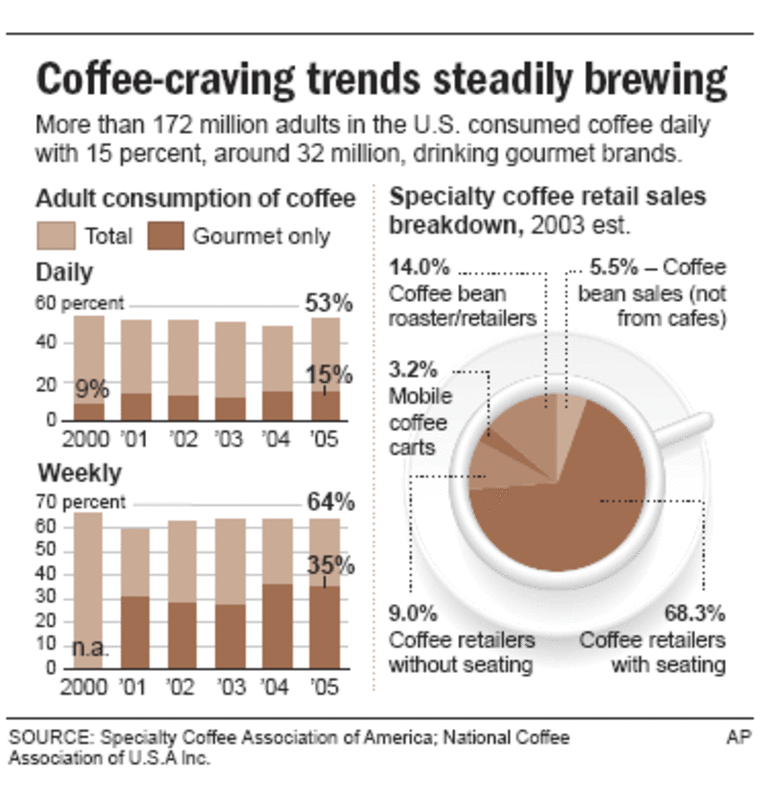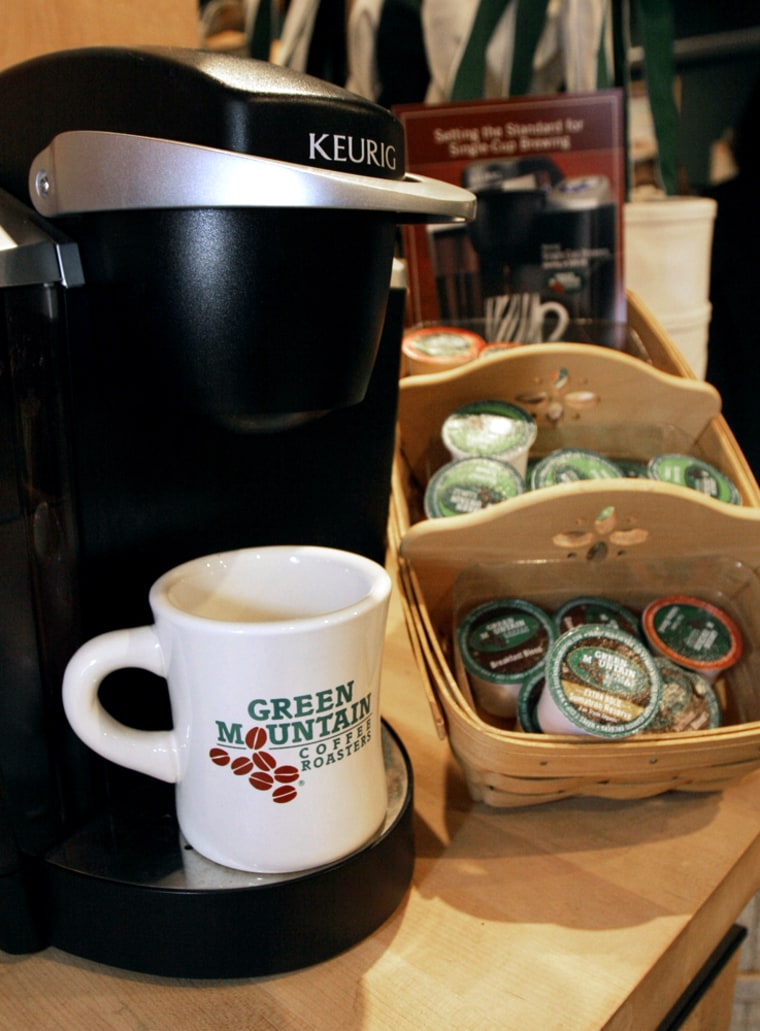A half dozen production lines operate 12 hours a day, cutting small filters and stuffing them into tiny cups, dropping in 2 or 3 grams of coffee and sealing them before whisking them into boxes.
The scores of little coffee containers, known around Green Mountain Coffee Roasters as K-Cups, rolling off the line every few minutes represent what the small specialty brewer hopes will be a revolution in the way Americans brew their favorite roast at home.
The diminutive cups are a self-contained coffee brewing system that can be popped into a relatively new brand of coffee maker to produce a single cup of steaming java. Gone, promoters of the systems say, are the days of a full pot of coffee slowly burning before it's thrown down the sink.
Green Mountain Coffee Roasters Inc. isn't alone. Brewers large and small, as well as appliance manufacturers, are getting in on the act and pushing the brewing systems as an ideal gift this holiday season for a population addicted to convenience.
"It's an instance of quality meets convenience," said T.J. Whalen, marketing vice president at Green Mountain Coffee.

Green Mountain and other small specialty brewers like it are trying to capture the higher end of the market with their more expensive brews and their fancier brewing systems. But companies from Procter & Gamble Co.'s Folgers brand to Sara Lee Corp.'s Senseo and Kraft Foods Inc.'s Maxwell House also are trying to capitalize on what a number of companies believe is an emerging trend in the home kitchen.
The machines have taken off in offices, but a critical mass is only just beginning to be reached where consumers might consider buying them for their homes. Companies as diverse as Mr. Coffee, Black & Decker, Krups and Keurig now make systems that can brew single cups of coffee in as little as 30 seconds using coffee pods — pockets of grounds that look like oversized tea bags — and individual cups manufactured by the roasters and food companies.
"We know from different market research that there is a reasonable potential behind this segment," said Lars Atorf, a spokesman for Procter & Gamble's coffee products, including the gourmet oriented Millstone brand. "We can definitely see where awareness is rising in the U.S."
The major brands are hoping that the connection with the gourmet coffee industry can give them an entree to that lucrative part of the market.
The 2005 National Coffee Drinking Trends survey by the National Coffee Association of USA found that more than 172 million American adults consumed coffee and 15 percent — some 32 million — said they drank gourmet coffee daily. That's grown from 9 percent six years ago.
That survey also found that nearly two-thirds of consumers were aware of single-serve brewing systems, but only 2 percent reported owning one and 14 percent said they were very or somewhat likely to buy one.
Jon Harris, vice president of Sara Lee Food & Beverage, said the machines are not intended to replace Starbucks stores or the corner coffee shop. He said Sara Lee's hope is that the Senseo brand will complement the ubiquitous coffee houses around the country.
"People are looking for that experience at home," Harris said.
The brewing systems have only been mass-marketed for the past couple of years and there are skeptics about whether they'll take off. Peter Greene, president of NPD Houseworld, a division of the NPD Group home appliance marketing research firm, believes they'll never replace the familiar automatic drip coffee makers.
"I don't think your everyday coffee drinker and the majority of the population are going to go in this way," he said. He noted there are limitations to the technology and no uniform pod or cup fits all machines.
And the machines are more expensive than the typical automatic drip system.
A basic Senseo brewing machine is being sold online for $69.99. The higher-end Keurig machine is being sold for between $99.95 and $279.95 for a version that's also marketed for office use.
The coffee that goes into them isn't cheap, either. At a Safeway supermarket in Washington, D.C., this week, a package of Senseo pods good for 18 cups was $3.99, a 13-ounce vacuum-packed brick of Folgers coffee went for $3.95. A box of 24 of Green Mountain's K-Cups is available online for $13.95, while a 12-ounce bag of beans goes for $8.19.
Still, NPD Group's market tracking has determined that a little better than 4.5 percent of the estimated 27 million coffee brewing appliances sold this year will be single-serve systems, up from roughly 1.5 percent of the market last year.
"It all depends on how you define success," Greene said. "I'd say these are going to be a success, but only 5 percent of the market."
But some of the disadvantages of the systems can be especially amplified in homes where people often expect a superior brew, said a coffee reviewer. One are the machines themselves. There's no industry standard, at least not yet, and the coffee pod or cup that works in one machine often isn't compatible with another.
And the other issue, a bigger one for a coffee aficionado like Ken Davids, editor of Coffee Review, is the coffee that goes into the machines. Quality varies widely, he said.
"Some of these coffees taste flat-out stale," Davids said late last month as he was halfway through blind tastings produced from the single-serve machines.
Davids is not impressed, although there are some decent coffees available.
"It's a cafe-at-home if you consider powdered milk, sugar and instant as a cappuccino," he said. "If you consider freshly brewed espresso and fresh-frothed milk a cappuccino, it's not."
